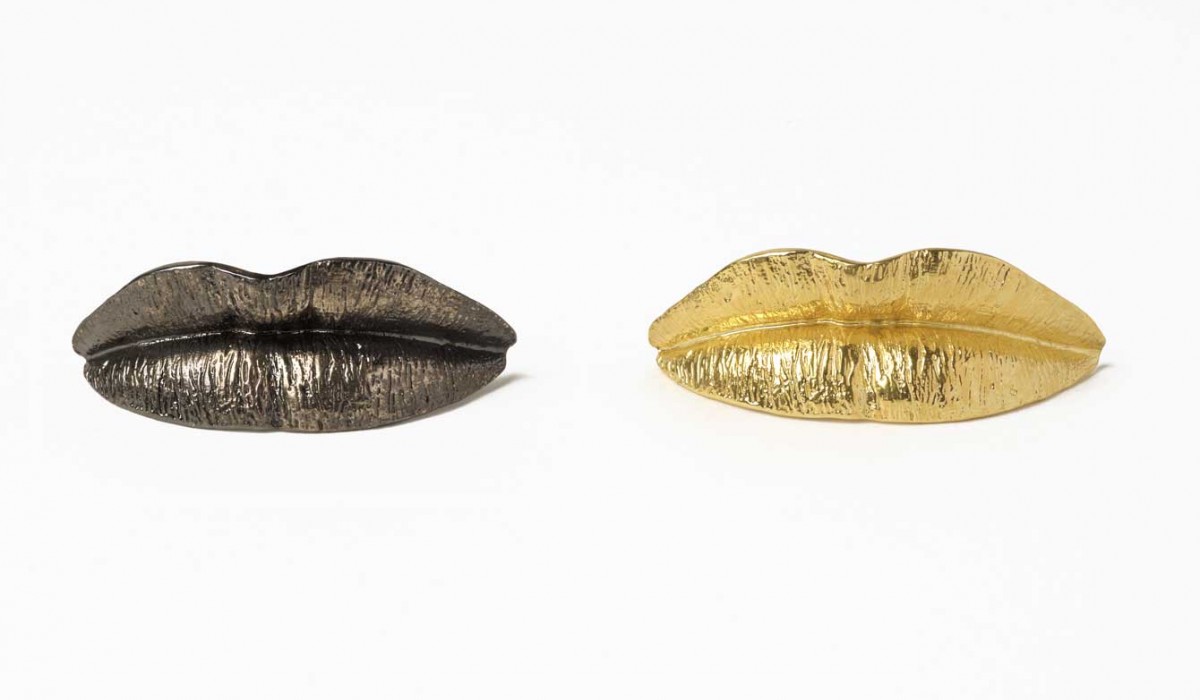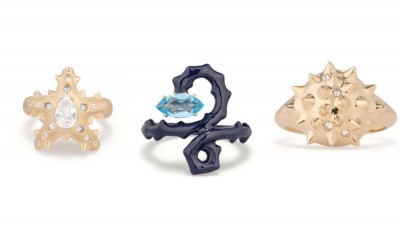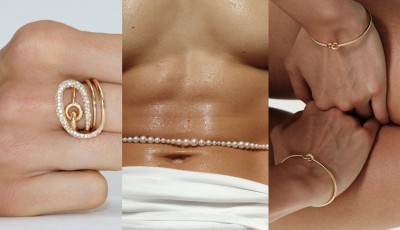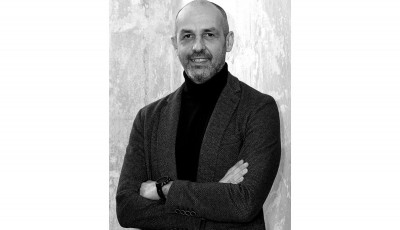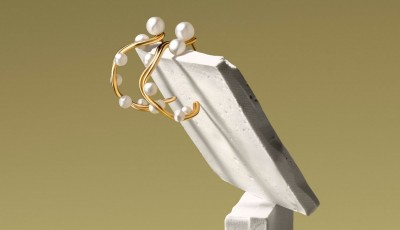Double interview about art jewelry
From the Portable Art Project in New York to the most influencing art galleries in London. Let's understand something more about art jewelry
On 20 April 2017, Hauser & Wirth debuted its Portable Art Project with an exhibition of wearable objects commissioned from fifteen artists. Featuring works that exist somewhere between sculpture and bodily adornment, Portable Art Project is just one of the latest example proving the 'Elective Affinity' between art and jewelry, but how is evolving this special relationship?
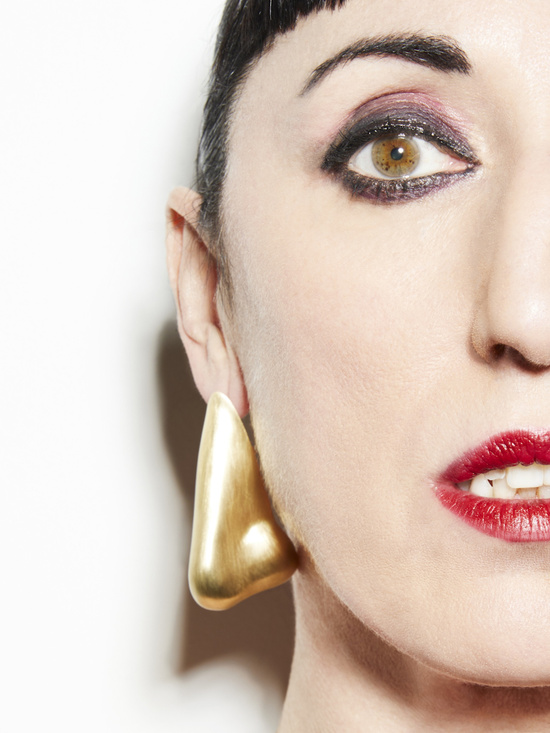 John Baldessari, Nose Earring (Gold), 2016 Photograph by Gorka Postigo, modelled by Rossy de Palma - From Portable Art Project:
John Baldessari, Nose Earring (Gold), 2016 Photograph by Gorka Postigo, modelled by Rossy de Palma - From Portable Art Project:
We spoke with Louisa Guinness and Elisabetta Cipriani, founders of two London based jewelry galleries, to understand how visual arts collide with precious materials, matching renewed demand from global collectors.
In conversation with Louisa Guinness
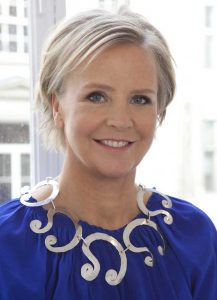 Louisa Guinness, founder of Louisa Guinness Gallery, wearing a necklace by Calder
Louisa Guinness, founder of Louisa Guinness Gallery, wearing a necklace by Calder
How has the art jewelry world evolved in recent years?
It was originally a big market in the Sixties and Seventies. I opened my gallery in 2003 and in the years since, artists’ jewelry has bounced back. Today, interest is exploding, especially in Europe and the US.
Which of your projects have you personally enjoyed?
While it wasn’t a collaboration, I really enjoyed The Boldness of Calder exhibition in 2016 for its historical aspect. Right now I am working with Anish Kapoor on fantastic designs that play with light, while British sculptor Alan Jones is creating jewelry that combines gold with perspex.
We understand Victoria Beckham featured pieces from the Gallery on her Fall 2017 runway?
Yes, she visited our gallery in London and selected jade and lapis lazuli brooches by British sculptor Emily Young. Victoria is a positive advocate of British artists, and supports the gallery as a business run by women. There has been a major change this year — the fashion world is now approaching artists to create jewelry.
How do you begin the process of a jewelry collaboration?
It actually takes more time than most artists realize, sometimes two years, so I explain this first. From there, it’s about working on ideas and designs together. If the artist isn’t used to working on a smaller scale they can find it difficult. I always encourage them to relate back to their design signature.
Working with artists, do you explore alternative materials or techniques?
The artists don’t tend to make the pieces themselves. Instead, we often work with The Goldsmiths’ Centre in London, producing 3D prints of designs to get an idea of scale and shape. We have also used laser sintering to print jewelry directly in 18-carat gold.
Can you share any of your upcoming projects?
Alongside Alan Jones and Anish Kapoor, I am also working on some jewelry designs with mechanical and scientific sculptor Conrad Shawcross. I have two or three other great artists that I am collaborating with, so watch this space.
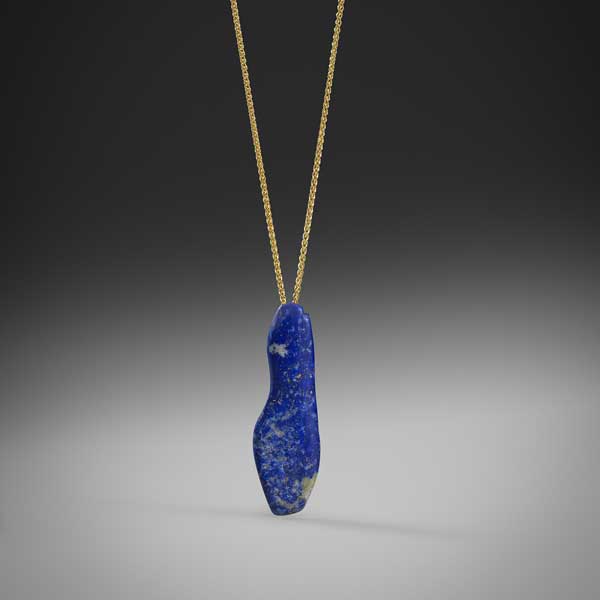 The 'Little Lapis Goddess' by Emily Young, 2016
The 'Little Lapis Goddess' by Emily Young, 2016
In conversation with Elisabetta Cipriani
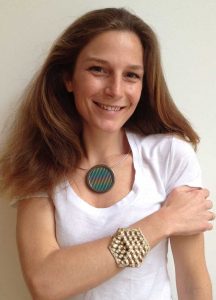 Elisabetta Cipriani, founder of Elisabetta Cipriani Jewelry by Contemporary Artists gallery
Elisabetta Cipriani, founder of Elisabetta Cipriani Jewelry by Contemporary Artists gallery
You launched your gallery in 2009 — how has the art jewelry market developed since then?
There has been greater interest in recent years, no doubt due to the increasing number of fairs that show jewelry by artists to existing art fans. The prominent collector Diane Venet has helped to raise the profile of artist jewelry through her jewelry exhibition, which travelled around the world. She herself owns over 400 pieces.
In your experience, what makes a work popular with collectors?
I’ve sold out of some editions in less than six months. For example, Giuseppe Penone’s Foglia necklace, crafted with twigs and a pure gold imprint of his palm. Now it’s Jannis Kounellis’ lip rings. Sometimes there is a surge in interest if an edition is about to finish or the artist has sadly died. Positively, my clients love to wear the pieces they buy — I only have one that is purely a collector.
Are any narratives emerging in artist jewelry?
I typically work with visual artists, so their jewelry is always an echo of their work. If their art is political the jewelry will reference it. Importantly, as the artists have no association with the jewelry world, they are not influenced by trends or branding. They put the same effort and energy into the jewelry as they would a work of art.
How long does an artist collaboration take?
It can take up to two years, because the artists are often quite established and jewelry is a new medium for them. The dialogue starts when I show them works that other artists have produced. There is a playful competition; they see another artist’s jewelry so they want to create their own.
Does technology play much of a role in artist jewelry creation?
Like Haute Couture, everything is crafted using hand skills, from the initial sketches to the final designs. This is something I strive to maintain. You see warmth in a piece when it’s handmade. When it’s too perfect or linear it becomes cold. Women are curvaceous; jewelry should follow this form.
What can you tell us about your latest works and artists you will include in your gallery?
I used TEFAF as the platform to launch Gri-Gri, a series of talismanic rings by Pascale Marthine Tayou. The rings are positive, energy-filled amulets crafted in 18-carat yellow gold, African cloth and colored threads. They even contain a hidden shamanic potion inside. Tayou believes art cannot be separated from life and consequently his work often uses everyday objects and materials.
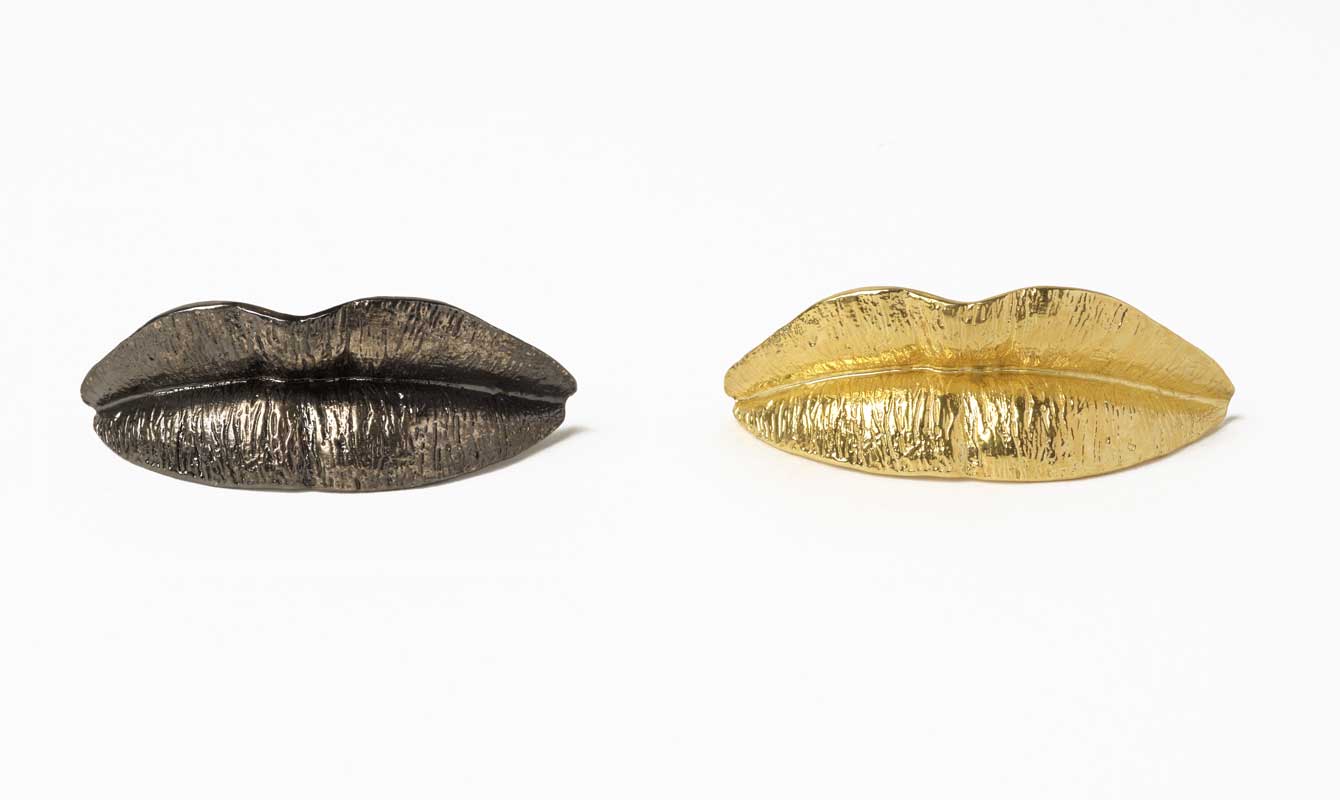 'Lips' rings in gold by Kounellis
'Lips' rings in gold by Kounellis
*As originally featured in the last issue of the VO+ USA special edition
Interview by Kathryn Bishop


